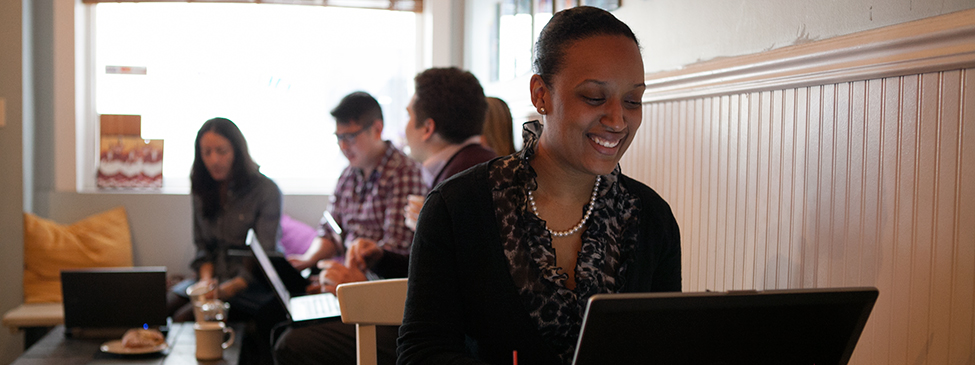“How do you make sure people aren’t sitting around watching ‘Oprah’ all day?” This is the type of question I get when people find out that TNTP is a virtual organization.
While Yahoo’s telecommuting policies have stirred up some controversy in the past few months, being virtual has been a key ingredient to TNTP’s success since our founding in 1997. Today, of our 330 staff members, just 29 work from TNTP’s office in Brooklyn.
Another 111 work in the offices of our partners, primarily school districts. Having staff embedded in district offices helps us better understand the challenges that our clients face, and it’s something I’m especially proud of. With one out of three TNTP employees calling a school or district “the office,” we get powerful, real-time insights into how our work plays out on the ground. That keeps our focus where it needs to be: on teachers and students.
The remaining 164 of us work from home, another aspect of TNTP that has shaped our culture for the better. It has allowed us to keep talented staff even as they have families, buy houses and relocate. That’s a key reason we’ve been able to retain 90 percent of high-performing employees, including 9 percent who have been with us for more than seven years, and 5 percent for more than 10 years.
Our virtual structure also drives growth. It’s far easier to expand seamlessly to new locations (just in the past year or so, we started working in Las Vegas and Connecticut) when we don’t need to set up offices. And it provides for a much greater talent pool, as we can recruit applicants from distant cities without asking them to move.
So what makes it work? We have picked up a few tips over the years:
- Go all in. Working remotely gets messy when everyone else is face-to-face and you are the lone person calling into the meeting—you miss all the visual cues, you can’t get a word in edgewise, and more often than not someone is rustling their papers right into the phone speaker. But if everyone is virtual, you learn to build around those needs. You recognize people on conference calls by their voices, you can hear the small tells when people want to chime in and speak, you know to call on silent participants, and you all rely on the internal blog to keep up to date. You are on a level playing field. It’s just a different type of field.
- Be intentional. Culture is no less important in a virtual environment—just like in a more traditional office, it is the glue that holds us together. We just have to be a little more intentional about it—so we do things like take organization-wide coffee breaks where we ask staff to go buy a coffee and ponder a specific question; we hold online book clubs and create communities of shared interests that range from using data tools to vegetarian cooking to working parents. We also embrace direct and timely feedback—because you can’t trust that someone can see your expression and ask if you have a concern.
- Goals, goals, goals. The answer to the Oprah question is that as long as you are getting your work done, if you want to watch Oprah reruns during the day or walk your dog or read a book to your child’s classroom, more power to you. We save time every day by eliminating the daily commute, and it’s a huge plus to be able to spend that time however you want. And how do I in Brooklyn know that you in Wauwatosa, WI, are getting your work done without installing a secret work cam in your computer? Because each of us has clear goals and we regularly check in on progress towards those goals. This focus on outcomes gives us all a strong vision of what success looks like, but the individual flexibility to figure out how we want to get there.
These insights are useful not just for other organizations, but also for districts and schools. Like us, they have a complicated mission, must be selective in how they allocate resources and need lots of diverse expertise. For example, video and broadband can enhance teacher observations, because they can help connect a specialized teacher with just the right expert to critique her classroom practice. Cloud-based computing, email and instant-messaging can help districts of any size hire the in-demand data specialist who may not live down the road, but has the critical skills to clarify what masses of spreadsheets sometimes obscure.
Virtual offices do pose challenges, but the possibilities are endless. And with a shared sense of mission, trust and respect, we can build organizations that are nimble, innovative and put resources in just the right places—regardless of the actual address.








